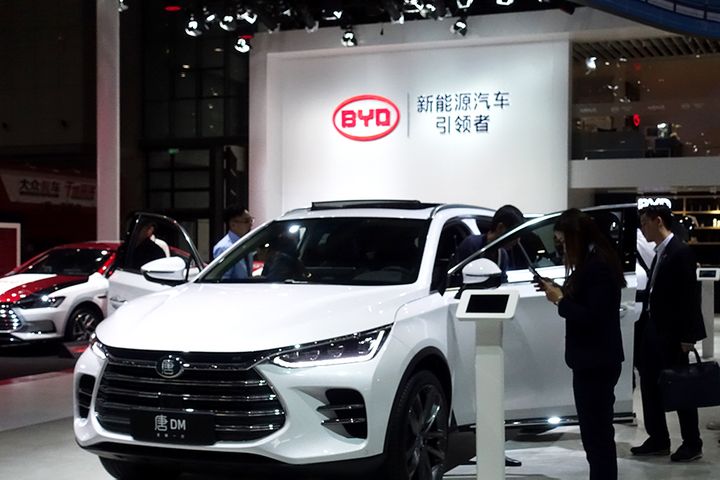 BYD Took Lion's Share of USD2 Billion NEV Grants China Doled Out Last Year
BYD Took Lion's Share of USD2 Billion NEV Grants China Doled Out Last Year(Yicai Global) Dec. 12 -- China handed out over CNY13.8 billion (USD2 billion) in advanced payments for new energy vehicle subsidies last year, the Ministry of Industry and Information Technology recently reported in a statement on its website.
The country shelled out CNY13.8 billion in NEV subsidies last year, and BYD made out like a bandit with a cool CNY3.6 billion, the statement said.
For passenger cars, Chery Automobile came in second with CNY1.3 billion, followed by SAIC Motor at CNY1.1 billion, Anhui Jianghuai Automobile Group to the tune of CNY964 million (USD137 million) and BAIC BJEV with CNY879 million, per the statement.
Commercial vehicle maker Zhengzhou Yutong Bus received CNY910 million in support.
Geographically, Anhui province ranked first with CNY2.7 billion in subventions. Others among the top five include Shenzhen, Shanghai and Shaanxi and Henan provinces. Shandong province fared the worst at a paltry CNY110,000 (USD15,630).
Cases of NEV subsidy fraud cropped up throughout 2016. Some NEV models for which grants applied were not the ones claimed. Some carmakers gained central and local funding even after they fabricated performance data or purchase and sales voucher records, or even failed to equip vehicles with batteries.
China revised the NEV subsidy standard later to make it more stringent, mandating that carmakers could only receive subsidies on NEVs bought by non-individual users with cumulative mileage of 20,000 kilometers, and that they monitor the operating status of all cars sold.
China has dropped many of these NEV incentives since July 1, and this has naturally dented sales. The country sold 95,000 NEVs last month, down 43.7 percent from the previous year, according to the China Association of Automobile Manufacturers. NEV sales gained 1.3 percent to 1.04 million in the first 11 months of this year, however, as US electric vehicle maker Tesla's Shanghai plant came online, and the allure of electric mobility started to revive as the government and private sector began investing more in charging infrastructure.
Editor: Ben Armour